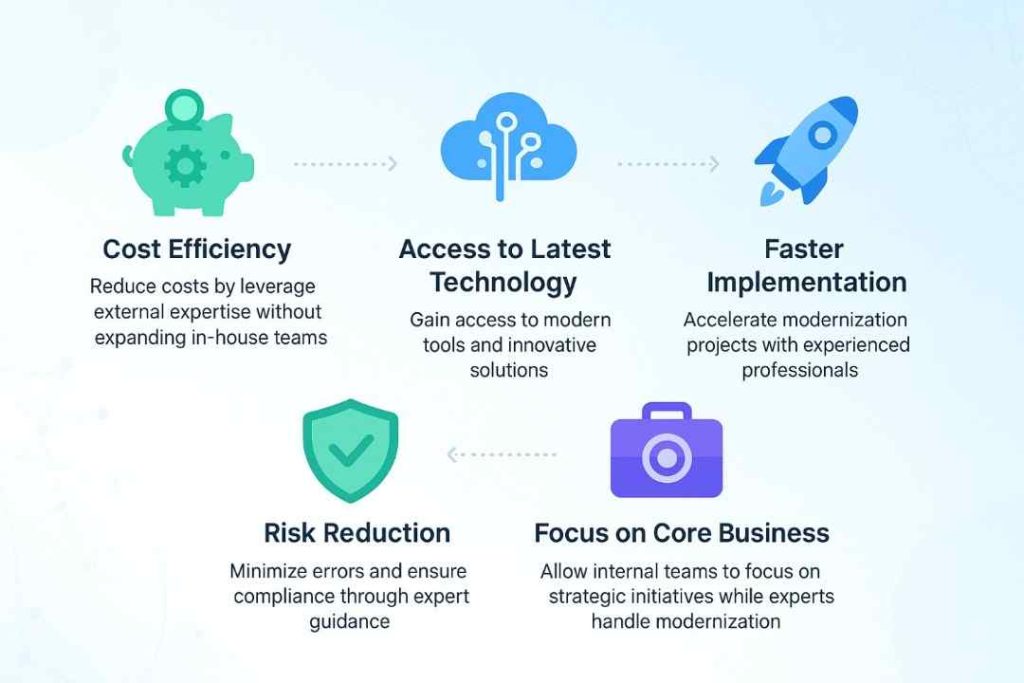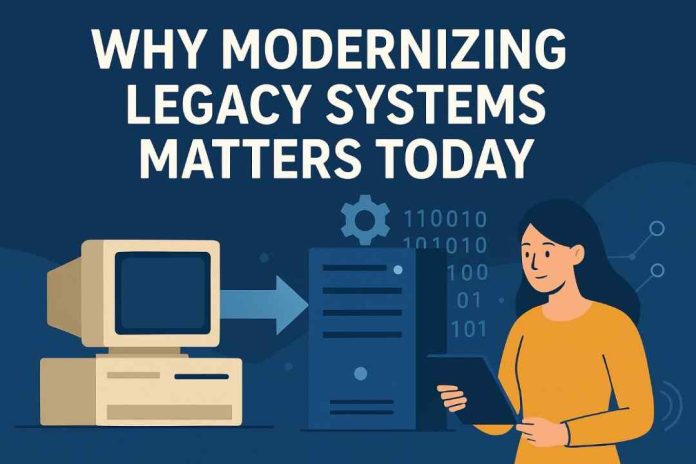Modern software development moves at a pace that legacy systems were never designed to withstand. Cloud-native architectures, microservices, container orchestration, infrastructure-as-code, and continuous delivery pipelines have become the norm, reshaping how organizations build and scale their digital products. Yet a large proportion of global enterprises still rely on decades-old systems that hold essential business logic but are increasingly misaligned with current technological requirements. According to a 2024 Forbes Tech Council article, 67 Fortune 100 enterprises continue to rely on mainframe systems, including 45 of the top 50 banks, 8 of the top 10 telcos, and 7 of the top 10 retailers. This highlights just how deeply embedded legacy infrastructure remains, even as organizations accelerate modernization initiatives.
This creates a structural challenge: companies cannot simply abandon systems that support their operations, but maintaining them in an outdated form generates technical debt, operational risk, and architectural limitations.
Because of this, legacy system modernization has shifted from “nice to have” to an unavoidable strategic necessity.
Table of contents
Why Legacy Containers of Business Logic Still Matter
Many legacy systems contain irreplaceable intellectual property. Applications built in VB6, Delphi, FoxPro, early .NET frameworks, or proprietary environments often encode business workflows that have evolved over the years. These systems are deeply embedded into internal processes, and their datasets hold the historical context needed for analytics and compliance.
However, the gap between these platforms and current engineering practices grows every year. Architectures created before cloud computing now struggle with:
- Limited horizontal scaling
- insufficient security posture
- inefficient resource utilization
- lack of observability and monitoring
- monolithic dependencies
- fragile integrations with modern APIs
- high maintenance costs due to the shrinking availability of specialists
When these systems remain unchanged, organizations face increased downtime risk and limited innovation potential.
Modernization Approaches: Beyond “Lift and Shift”
Modernizing legacy applications is not equivalent to performing a simple rebuild. Effective modernization includes several architectural pathways, each with its own rationale:
1. Rehosting (Lift and Shift)
Migrating the application to a virtualized or cloud infrastructure without altering code.
This is useful when reducing infrastructure overhead is more urgent than functional changes.
2. Replatforming
Migrating databases and middleware to modern equivalents, such as moving from SQL Server on-prem to Azure SQL or migrating Windows-dependent workloads to Linux-compatible alternatives using containers.
3. Refactoring
Modularizing components, reducing monolithic dependencies, and improving code quality to prepare for future enhancements.
4. Re-architecting
Transitioning from monolithic systems to service-based, microservices, or event-driven architectures to achieve improved scalability and maintainability.
5. Rebuilding
When the existing codebase is too rigid or obsolete, organizations sometimes rebuild the system from the ground up while preserving business rules and data consistency.
In practice, modernization rarely follows a single pathway. Mature modernization programs blend multiple strategies based on system complexity, business risk, and integration demands.
Why Companies Choose External Modernization Expertise

Modernization requires an unusual mix of old and new skills. Engineers must understand legacy languages, outdated frameworks, vintage database engines, and older architectural patterns while also possessing cloud engineering knowledge, DevOps expertise, and experience with modern distributed systems.
This combination is rare, which is why organizations often turn to specialists such as ModLogix for structured modernization programs. Companies like these provide systematic assessments, build migration roadmaps, replace deprecated components, and transition software to architectures that are compatible with long-term business needs.
External teams also reduce risks by validating dependencies, analyzing hidden business logic, and ensuring that the modernization effort does not disrupt critical operations.
Key Technical Outcomes of Modernization
When modernization is executed correctly, companies achieve improvements across multiple engineering layers:
1. Architecture and Scalability
Re-architected systems support autoscaling, distributed processing, and optimized resource allocation across cloud environments. This is essential for applications that experience unpredictable load or require continuous availability.
2. Security and Compliance
Older systems typically lack encryption by default, secure authentication, modern identity management, network segmentation, and continuous auditing. Modern platforms address these issues through standardized security frameworks and policy-driven infrastructure.
3. Integration Readiness
Modernized systems can integrate with third-party APIs, analytics services, payment gateways, and automation tools. Legacy systems often rely on outdated communication protocols or tightly coupled modules that resist integration.
4. Operational Efficiency
Cloud-native deployments enable streamlined CI/CD pipelines, automated testing, container-based environments, and comprehensive observability through metrics, logs, and traces.
5. Cost Optimization
While modernization involves upfront investment, long-term savings result from reduced maintenance costs, lower infrastructure costs, and lower downtime risk. Resource consumption drops significantly when workloads are moved from legacy servers to optimized cloud environments.
Modernization as a Foundation for Future Engineering
Modernization does not end with migrating to the cloud or updating a framework. Instead, it establishes the foundation for ongoing innovation. Once systems are freed from obsolete dependencies, companies can:
- Integrate AI-driven analytics
- Adopt microservices and event streaming
- Improve DevOps maturity
- Introduce automation at scale
- Accelerate feature delivery
- Support global expansion
Organizations also gain the flexibility to transition to serverless computing, edge architectures, or hybrid-cloud setups without hardware constraints.
Conclusion
Legacy modernization is one of the most technically demanding yet strategically valuable initiatives for any organization. The longer a business delays addressing outdated systems, the greater the risk of losing operational resilience, security, and innovation capacity.
By applying the right modernization approach and, when necessary, working with experienced partners like ModLogix companies, they can preserve their existing business logic while unlocking the scalability, efficiency, and security demanded by today’s technology landscape.
Modernization is not merely a technical upgrade. It is a structural enabler for everything a business plans to build in the next decade.











